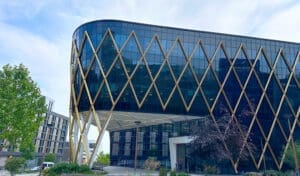How to Create a Powerful Life Science Conference Follow-Up
Conference follow-up marketing with our powerful guide
In our previous Life Science Conference article, we shared our team's industry experience and tips on how to get the most value for your company attending a life science conference.
Included in that was a simple question that we’ll explore in more detail.
Do you need to focus as much on post-event activity as you do in attending to see results on the bottom line?

Life Science conferences - the event itself is just the start.
Inside your company you’ll have spent many hours, weeks even months preparing. The event is an intense few days of activity and opportunities. As soon as you return there is the pressure to return your attention to daily operations put down for the week.
Planning ahead
But as you plan for the life science event, extend the timeline to include time afterwards as a continuation of the event and its aims for your business. This has several benefits,
- Allocate time in advance for people who weren’t necessarily at the event to be a part of it. This has an added benefit of encouraging those same people to check in to daily feedback during the event, gathering information early to start acting immediately after.
- Continue the momentum and buzz at the event back in your office and include the whole company in the successes that follow. Build-in time to feedback any challenges you experienced in demonstrating your unique advantages live in front of customers to the whole team. And then include time for the research and development team to come up with a solution for next time.
- Consider contingency plans. If the leads you were expecting didn’t materialise, what activities and resources could you commit to target a delegate list that you may receive after the event?
- What content can create that will repurpose for the next event or an alternative lead generation campaign if the event itself does not deliver what you expect.
Arttia Creative can work with you to create eye-catching exhibition collateral including; stand graphics, booth banners, leaflets, brochures, hand-outs, media packs and take-aways. Together with co-ordinated digital marketing for the event and follow-up creative media that drives leads.

- What is the lead nurturing plan and content you can build up to make them aware, interested, desire and act on what you have to offer them as a new customer?
- Add your new leads into each of these stages and consider the user-journey they need. Does your life science website design allow you to present the right information at the right time in the right way?
At Arttia Creative we design websites that are easy for you to tailor your content as often as you need. Let us take a look at your life science website and see the difference we can make.
- Build-in time to develop pathways for customers to build up awareness, interest and clear calls to action to help them get the right information as they research you after meeting on the ground.
Your life science conference is the start of lead generation
Follow up starts at the life science event
Understanding a potential customer’s situation makes follow up more effective and memorable. It makes it possible to personalise what you do to continue the conversation, how and when.
This happens at the event. However, you get contact information, a business card, contact form, note in your book make sure you write down as much situational information as possible at the time. Things to consider exploring are,
- Who do they work with you might already know or is local to them?
- What competitor products and services do they already use?
- What is their measure of success in their specific role?
- What is the biggest challenge they face right now?
- Why did the interaction between you occur?

Why your life science conference event is just the start
Then when it comes to post-event lead nurturing you can start with a follow-up that is focussed and qualified. So rather than a generic“Hi, we met at X event and I’m sharing more information about what we do since you sounded interested”.It can be more.
“Hi Peter, we met at X event during the coffee break in the session about quality measures in the analysis of raw ingredients pre-processing. We spoke about the problems you’re having with getting specific data from using [competitor product] to support your product formulation quality control.
There is a group already using [our company product] at a site near you and they’re able to generate the data they specifically need for their needs. Let me know a good time to call you and I can share details and we can see if that is an option for you too.”
Make lots of notes.
Most life science conferences have a handbook with all the schedules, talks, speakers, posters and additional information.
Annotate a copy as you spend each day at the conference. Highlight the talks that you observed that included your products or services, highlight the talks that used competitors’ products and services.
Then consider ways to communicate and follow up. Ideally prioritise them into topics such as existing lead nurturing, new leads, business development, and competitor activity.
This makes it easier to breakdown the follow up into specific actions for specific people. Much less overwhelming than a big mix of opportunities you know you should follow up, each requiring a different approach.
Your process for effective life science conference follow up

Your post-event follow up plan
So you’re back in your usual working environment, maybe a different country, to where you made contact with people at the event.
It’s the first day back in the office, you’re unpacking the literature, business cards, trying to remember why you made that note on the flyer you picked up. And so are all the delegates that you went to try and connect with.
So planning an effective conference follow-up strategy might need to start with a pause and information gathering.
Here is what you need to action now–
- Have a company debrief. It doesn’t have to be elaborate, a stand-up with everyone to share highlights and look at the post-event activity timeline to see if that still stands after what you experienced at the event.
- Can you see an increase in visits for pages about your company or a product during and immediately after the event?
- Did visitors stay to read or just land and leave? What was the bounce rate of exit page?These insights can help you consider whether to spend time creating new content and putting in on your website to support event follow up.
- Find the right information to share. Not just what you took to the conference but existing content too. One way to do this is to consider if there was a common theme from interactions with visitors to your exhibition booth?
For example, did people ask who you were and hadn’t heard of you before?
- Maybe you should consider the first step in post-event activity in creating awareness in what makes you experts and sharing the success of what you’re the company has already achieved as well as sending specific information for the product you were there to promote.
- Look at the conference handbook that you annotated. Were there any people you expected to speak to but didn’t?Do you have any existing content that is relevant to the themes of the talk tracks that you can promote after the event to establish yourself as experts in that field to build awareness of what you do that is relevant to the event?
Tactics to support your post-event communications
Is the fortune is in the follow-up?

What to do if you get no replies to post-event communications?
Remember you will be competing for time and attention of any new leads and contacts immediately after a conference. Remind your audience who you were and why they should be speaking to you.
Don’t assume they’ll remember you based on one of many interactions that had in a few days of intense networking.
It’s important to make contact while relationships are still fresh after the event.
It is essential to develop fresh content, communicating that in creative ways and making it accessible 24/7 on your website - Arttia Creative is here to make this process easy for you.
Often when you speak to customers it wasn’t one thing that made them contact you but something in their action list that triggered it. 80% of the information needed to make a purchase decision could have reached them before the contact is made. Making your job more efficient at closing the sale.
However, there may be a point where you choose to re-evaluate the value of the leads from the event. One tactic to consider is sending a final:
“I hope you’ve found the information I’ve sent since meeting the conference useful but for now I’ll assume now is not a good time for you to be evaluating our [product/service] so I’ll remove you from any more follow up after our meeting and keep you up to date in a more informal way. Look forward to continuing discussions in the future.”
A prompt like that saying you’ll be withdrawing contact may be enough to push them into making that call and putting something into diaries?
The Takeaway.
The importance of effective life science conference follow up
A lot of effort goes into taking your people and products or services to an event and letting people know you’ll be at the event and why they should come and see you.
After the event, you, and the people you went to influence will be competing for time to process and action what came from that from their own perspectives. It’s worth remembering that your competitors will also be doing that too.
What you need to make this efficient and remarkable is an effective lead nurturing plan created by Arttia Creative.
Ideally built into the event planning from the start. But if not it’s never too late to pause and make that plan.
A key part of the lead nurturing plan and operations is information gathering and making what you do relevant and personalised as possible.
This starts at the event itself with focussing on understanding the potential customer’s situation. Sharing the themes you identified on the ground and linking that up with content that either exists already or that you need to create to continue the conversations started at the meeting. You can use website analytics to support what on-line information was sought around your business during the event.
Lead nurturing, especially after a conference is a long-game. Translating what sounded strong interest during a meet-up at the booth into a sale could take 6-9 months depending on the complexity of your product or service.
Planning to attend, and attending an event is only half the activity. Multiple touch-points over an extended period are required to see results on the bottom-line from a lead sourced at the event.
Personalised emails, direct mailed information and nudges to reconnect in person and on-line are required to make the most of what you do at any event.
The event itself may be over but the challenges discussed by industry leaders and solutions your customers need are still very real and present after the event.
Continue to keep your life science website content live, informative and accessible to your leads. Consider concentrating on a certain theme from the conference for a month or more to show you are still a viable option in that field, even if you are on to planning to attend the next event in a different sector.
Get your conference follow-up project started
Arttia Creative is here to help you to stand-out and engage successfully with the people you want to speak to after your conference. Let's talk.
Why not contact us to discuss your project or book one of our 15-minute consultancy sessions so we can help you take action now.

Belinda White | Creative Director
Related Articles
From Spin-outs to the Future of Life Sciences. Insight from BioFocus 2025
Early in June 2025, we had the pleasure of attending the BioFocus 2025 conference at the Catalyst building, nestled in the heart of the Helix Science Park in Newcastle upon Tyne. Hosted by Bionow, this annual event brought together life sciences professionals, innovators, and advocates from across the North of England—and what a day it was.
Read Article >>Powering North East University Life Sciences Spin-outs
Some of the most transformative innovations in biotech, life sciences, and digital health are born in university labs. Across the North East, world-class research is underway in institutions like Newcastle, Northumbria, Sunderland, Durham, and Teesside Universities, pushing the boundaries of science and medicine.
Read Article >>

